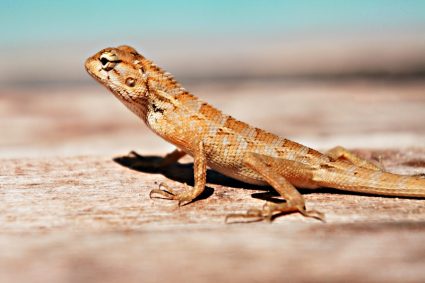
Raccoons may be cute from afar, but when they take up residence in your crawl space, they can cause a multitude of problems. From damaging your property to spreading diseases, these critters are far from the ideal houseguests. So, how do you get rid of raccoons in your crawl space? This comprehensive guide will walk you through the process, providing you with practical solutions, expert advice, and useful tips.
To get raccoons out of a crawl space, first identify their presence through signs like paw prints, damage, scratch marks, droppings, and noises. Then, identify the entry points they’re using. Use eviction fluid, repellents, and harassment techniques like bright lights and loud music to encourage them to leave. If necessary, use live traps to capture and relocate them. After removal, seal all entry points and clean up the area. For future prevention, regularly inspect and repair your crawl space. Always check local regulations before trapping and relocating raccoons. If the problem persists, consider hiring a professional wildlife removal service.
Identifying a Raccoon Infestation
Before you can begin the process of removing raccoons from your crawl space, you need to confirm their presence. There are several signs that indicate a raccoon infestation, including:
- Paw prints: Raccoon paw prints are easily identifiable, featuring five finger-like toes and a width of two to three inches.
- Exterior home damage: Raccoons can cause damage to various parts of your home, including roofs, soffits, and crawl spaces.
- Scratch marks: These marks, often found at the base of trees or woodpiles, can indicate raccoon activity.
- Droppings: Raccoon feces are typically dark in color, cylindrical in shape, and often contain seeds or berries. They emit a strong, unpleasant odor which is a clear sign of raccoon presence.
- Noises: Raccoons make a variety of noises, including growls, squeals, purrs, and snorts. If you hear these sounds coming from your crawl space, it’s a sure sign of raccoon activity.
If you notice any of these signs, it’s time to take action.
Step-by-Step Guide to Raccoon Removal
Step 1: Identify the Entry Points
Inspect the exterior of your house to find the raccoon entry hole(s). Common entry points include roof vents, chimneys, gaps around utility cables and pipes, holes near building foundations, open vents, and damaged soffits and eaves.
Step 2: Use Eviction Fluid
Raccoon eviction fluid, made from male raccoon urine and gland secretions, can be effective in encouraging female raccoons to leave the area due to the perceived threat to their offspring. Apply the eviction fluid near the entry points and the raccoon’s den.
Step 3: Use Repellents
Place ammonia-soaked rags near the raccoon’s den and entry points. Commercial repellents like Repel® Granules or homemade hot pepper repellent can also be used.
Step 4: Employ Harassment Techniques
Place bright lights and a radio playing loud music near the raccoon’s den to make the area less appealing.
Step 5: Live Trapping
If the raccoons are not leaving on their own, you can use live traps baited with marshmallows to capture them. Remember to check local regulations and guidelines for trapping and relocating raccoons.
Step 6: Seal Entry Points
Once the raccoons have been removed, seal all entry points to prevent future infestations. You can use wire mesh or other sturdy materials to block access.
Step 7: Clean Up
Remove any raccoon feces and contaminated materials from the crawl space, as raccoon feces can contain harmful parasites like roundworm.
Step 8: Prevent Future Infestations
Regularly inspect and repair your crawl space, and consider adding a mesh screen behind deck or porch skirting to keep raccoons and other pests from entering.
If you’re unable to remove the raccoons yourself or the problem persists, consider hiring a professional wildlife removal service.
Legalities Surrounding Raccoon Removal
Before attempting to remove raccoons, check your local and state regulations. In some areas, homeowners may need a trapping license or a registered trap number to legally set traps for raccoons. Using poison to kill raccoons is often illegal, and relocating trapped raccoons may be restricted in some areas.
Conclusion
Raccoons can be a nuisance when they invade your crawl space, but with the right knowledge and tools, you can effectively remove them and prevent future infestations. Remember to always handle wildlife with care and respect. If you’re unsure or uncomfortable dealing with raccoons, don’t hesitate to contact a professional wildlife removal service.
Frequently Asked Questions
What is the best time of day to attempt raccoon removal?
Raccoons are nocturnal animals, so the best time to attempt raccoon removal is during the day when they are likely to be sleeping.
Is it safe to handle raccoon feces without protective gear?
No, it’s not safe to handle raccoon feces without protective gear. Raccoon feces can contain harmful parasites like roundworm. Always wear gloves and a mask when cleaning up raccoon feces.
Can I use any type of trap to catch raccoons?
It’s best to use live traps designed specifically for raccoons. These traps are humane and won’t harm the animal. Remember to check local regulations and guidelines for trapping and relocating raccoons.
Can raccoons cause damage to my home?
Yes, raccoons can cause significant damage to your home. They can chew through materials, damage insulation, and their feces can contaminate your home.
What should I do if I’m bitten by a raccoon?
If you’re bitten by a raccoon, seek medical attention immediately. Raccoons can carry diseases like rabies that can be transmitted through bites.
Can I use poison to get rid of raccoons?
Using poison to kill raccoons is often illegal and is not a humane method of control. It’s recommended to use eviction fluids, repellents, and traps to remove raccoons from your property.
Is there a certain time of year when raccoons are more likely to invade my crawl space?
Raccoons can invade your crawl space at any time of year, but they are most active in the spring when they are looking for a safe place to have their young.











